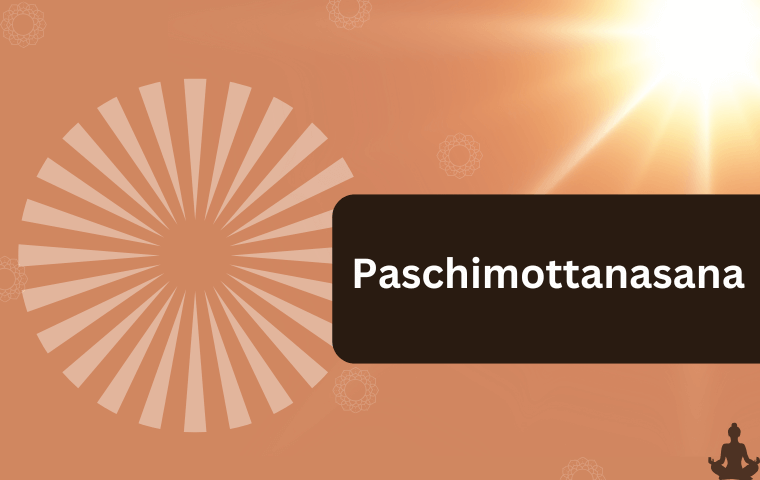Paschimottanasana, also called the Seated Forward Bend Pose, is an essential yoga pose that improves flexibility and encourages inner serenity. This pose originates from Sanskrit, with ‘Paschim‘ meaning ‘west‘ (symbolizing the back of the body), ‘Uttana‘ signifying ‘deep stretch,’ and ‘Asana‘ translating to ‘posture.’ Practicing Paschimottanasana helps improve flexibility, strengthens the spine, and calms the mind.
How to Perform Paschimottanasana

- Starting Position: Sit on the ground with your legs extended straight forward. Keep your spine erect and feet together.
- Inhale and Stretch: Raise your arms upward while taking a deep breath, lengthening the spine.
- Exhale and Bend Forward: Slowly bend forward from the hips, reaching toward your toes with your hands.
- Hold the Position: Try to touch your forehead to your knees while keeping your legs straight. Hold your feet, ankles, or shins, depending on your flexibility.
- Breathe and Relax: Stay in the position for 20-30 seconds while breathing deeply.
- Return to Starting Position: Inhale and slowly rise back to a seated position, releasing the posture gently.
Benefits of Paschimottanasana
- Improves Flexibility: Enhances flexibility in the spine, hamstrings, and lower back.
- Aids Digestion: Stimulates abdominal organs, improving digestion and metabolism.
- Reduces Stress: Calms the nervous system and helps relieve stress, anxiety, and mild depression.
- Boosts Circulation: Encourages blood flow to the spinal cord and brain, promoting overall vitality.
- Relieves Lower Back Pain: Stretches the lower back muscles, reducing stiffness and discomfort.
- Enhances Focus: Encourages mindfulness and improves concentration by reducing mental distractions.
Precautions and Contraindications
- Avoid if you have severe back pain, herniated discs, or sciatica.
- Pregnant women should practice with modifications or avoid the pose altogether.
- Do not force yourself into the pose if you experience discomfort; gradually improve flexibility over time.
- If you have asthma or respiratory issues, practice with caution and do not overstrain.
Tips for Beginners
- To avoid strain from tight hamstrings, maintain a gentle bend in your knees.
- Use a yoga strap around your feet to help deepen the stretch gradually.
- Practice regularly with controlled breathing to improve flexibility and posture.
Paschimottanasana for a Balanced Body and Mind
Paschimottanasana is a simple yet effective yoga pose that provides numerous health benefits, from improved flexibility to mental relaxation. Practicing it regularly can help in achieving a balanced body and mind. Always listen to your body and perform the pose at your own pace for maximum benefits.

